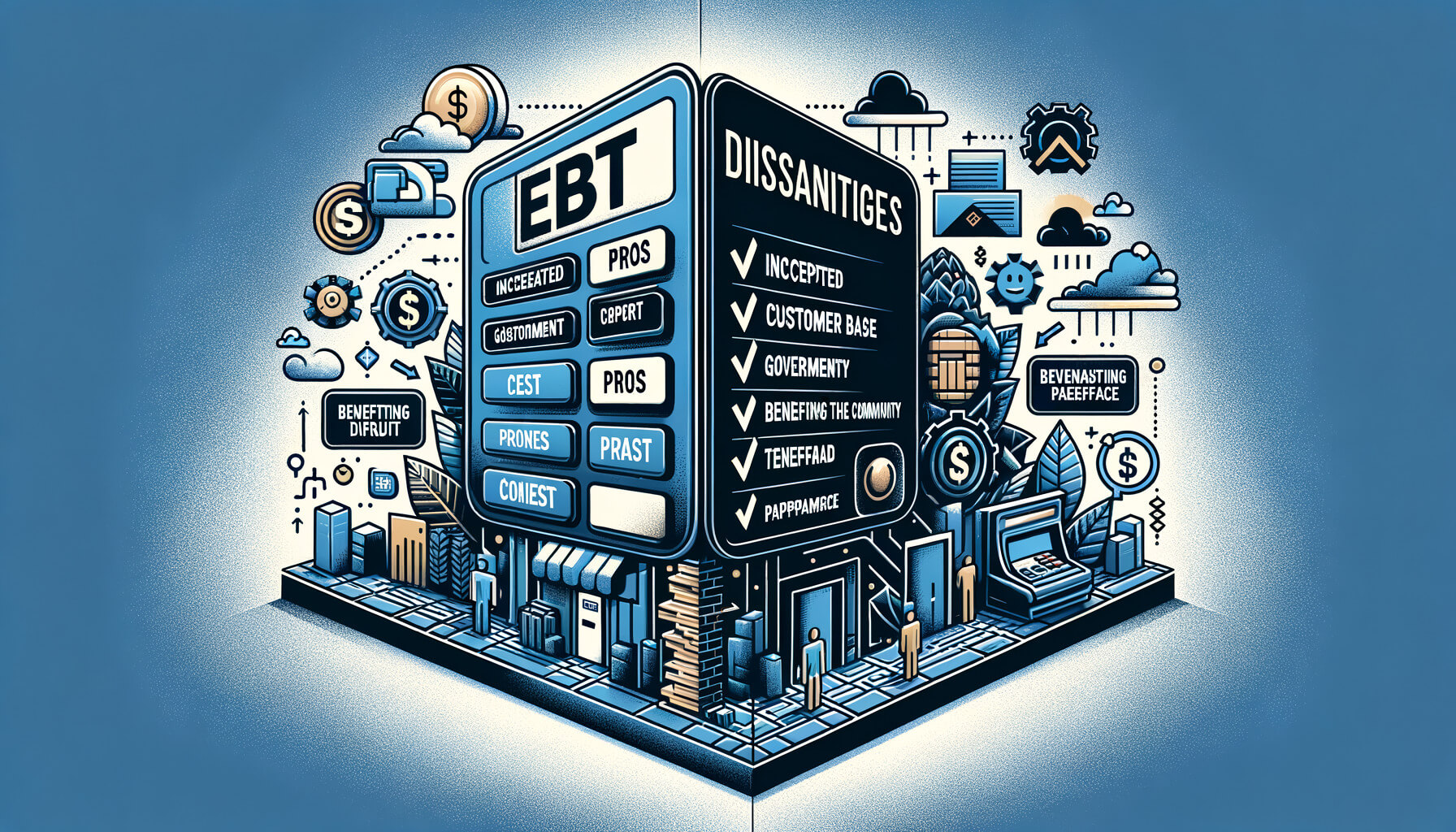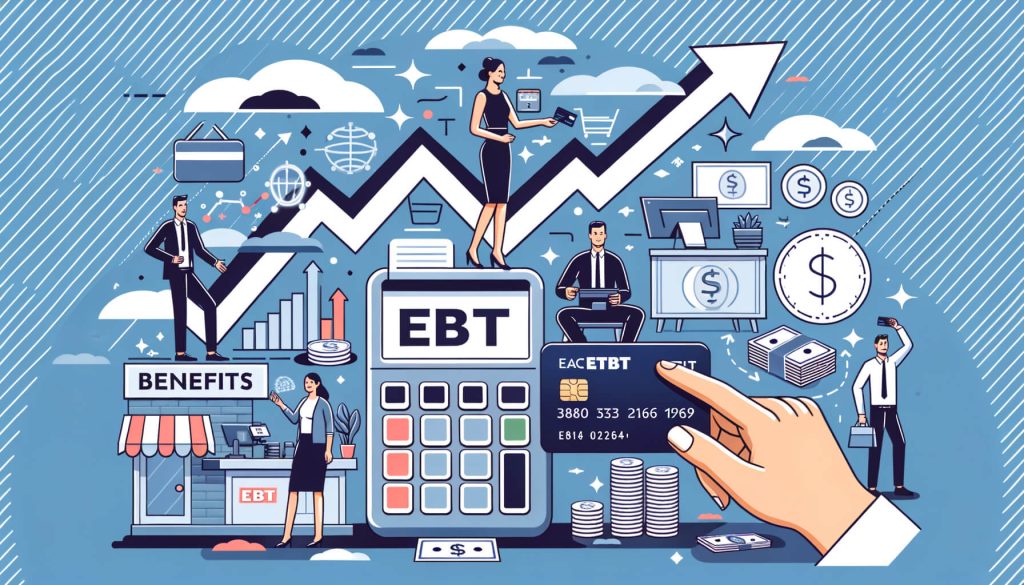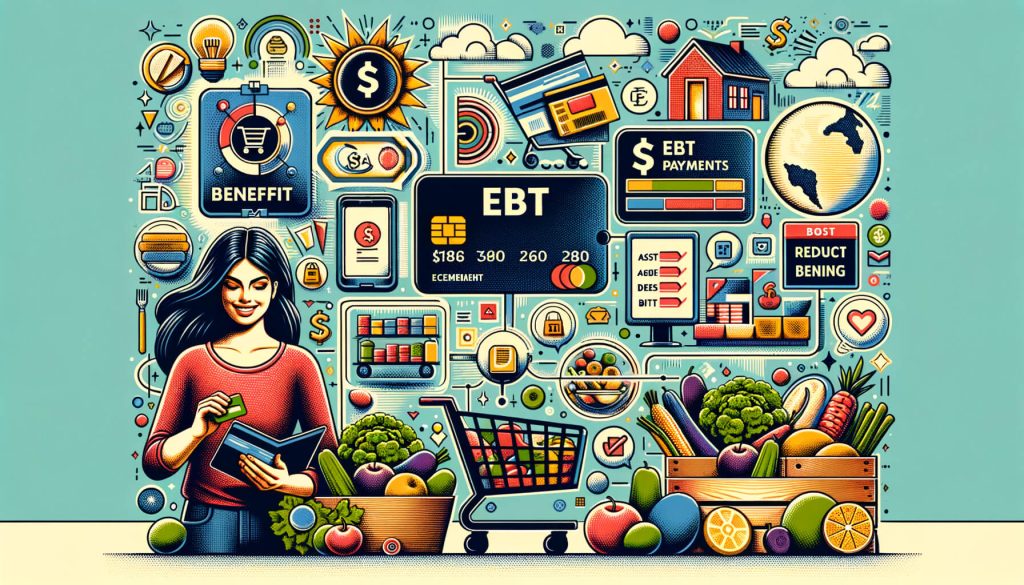
By Ethan Brooks November 4, 2024
In today’s digital age, electronic payment methods have become increasingly popular, offering convenience and efficiency for both customers and businesses. One such payment method is Electronic Benefit Transfer (EBT), which allows individuals and families to access government assistance programs, such as the Supplemental Nutrition Assistance Program (SNAP) and Temporary Assistance for Needy Families (TANF). EBT payments are made through a plastic card, similar to a debit or credit card, and can be used to purchase eligible food items and other necessities.
The acceptance of EBT payments in businesses has become a topic of discussion, with proponents highlighting the benefits it can bring, while others raise concerns about potential drawbacks. In this article, we will explore the pros and cons of accepting EBT payments in your business, providing a comprehensive analysis of the impact it can have on your operations.
Pros of Accepting EBT Payments in Your Business

- Increased Customer Base: Accepting EBT payments opens up your business to a wider customer base, as individuals and families who rely on government assistance programs can now shop at your establishment. This can lead to increased foot traffic and potential sales.
- Community Support: By accepting EBT payments, you demonstrate your commitment to supporting the local community and helping those in need. This can enhance your business’s reputation and attract socially conscious customers.
- Guaranteed Payments: Unlike traditional payment methods, EBT payments are guaranteed by the government. This reduces the risk of fraudulent transactions or bounced checks, providing businesses with a more secure payment option.
- Streamlined Checkout Process: EBT payments can be processed quickly and efficiently, allowing for a smoother checkout experience for both customers and employees. This can help reduce wait times and improve overall customer satisfaction.
- Access to Government Contracts: Accepting EBT payments can open doors to government contracts and partnerships. Many government agencies and organizations prefer to work with businesses that support their programs, providing opportunities for growth and expansion.
- Competitive Advantage: In industries where EBT acceptance is not yet widespread, businesses that offer this payment option gain a competitive edge. This can attract customers who specifically seek out establishments that accept EBT payments.
- Increased Sales: Studies have shown that businesses accepting EBT payments experience an increase in sales, particularly in the food and grocery sectors. This is due to the fact that individuals receiving government assistance often spend a significant portion of their income on essential items.
- Convenience for Customers: EBT payments provide convenience for customers who may not have access to traditional banking services. They can easily manage their funds and make purchases without the need for cash or checks.
- Positive Public Relations: Accepting EBT payments can generate positive publicity for your business. Media outlets and community organizations may highlight your commitment to social responsibility, further enhancing your brand image.
- Potential for Repeat Business: By providing a welcoming and inclusive environment for EBT customers, you have the opportunity to build customer loyalty. Satisfied customers are more likely to return and recommend your business to others.
Cons of Accepting EBT Payments in Your Business

- Initial Setup Costs: Accepting EBT payments requires businesses to invest in compatible point-of-sale (POS) systems and equipment. This can be a significant upfront cost, especially for small businesses with limited resources.
- Transaction Fees: EBT payment processors charge transaction fees for each payment processed. These fees can vary depending on the provider and the volume of transactions, potentially eating into your profit margins.
- Limited Eligible Products: EBT payments can only be used to purchase eligible food items and necessities. Businesses that primarily sell non-food items may find that a significant portion of their inventory is not eligible for EBT payments, limiting the potential sales from EBT customers.
- Increased Compliance Requirements: Accepting EBT payments comes with additional compliance requirements, as businesses must adhere to government regulations and guidelines. This includes maintaining accurate records, participating in regular audits, and ensuring compliance with program rules.
- Potential for Fraud: While EBT payments are generally secure, there is a risk of fraudulent activity. Businesses must be vigilant in verifying the validity of EBT cards and ensuring that purchases are made by the authorized cardholder.
- Training and Education: Employees need to be trained on how to process EBT payments and understand the rules and restrictions associated with these transactions. This requires additional time and resources for training, which may be a burden for businesses with high employee turnover.
- Limited Customer Spending Power: EBT payments are typically limited to a specific amount per month, based on the individual or family’s eligibility. This means that EBT customers may have limited spending power compared to customers using other payment methods, potentially impacting sales.
- Potential Stigma: Some businesses may worry about the potential stigma associated with accepting EBT payments. However, it is important to recognize that government assistance programs exist to support individuals and families in need, and accepting EBT payments should be seen as a positive contribution to the community.
- Increased Accounting Complexity: Businesses accepting EBT payments must keep accurate records of these transactions for reporting and auditing purposes. This can add complexity to the accounting process, requiring additional time and resources.
- Potential for System Downtime: Like any electronic payment system, there is a risk of system downtime or technical issues. Businesses must have contingency plans in place to ensure that EBT payments can still be processed during such situations.
How to Accept EBT Payments: A Step-by-Step Guide
- Determine Eligibility: Before accepting EBT payments, businesses must determine if they are eligible to participate in the program. Eligibility requirements vary by state, so it is important to check with the appropriate government agency or program administrator.
- Obtain Necessary Equipment: Businesses need to invest in compatible point-of-sale (POS) systems and equipment to process EBT payments. This may include EBT card readers, barcode scanners, and software updates to enable EBT acceptance.
- Apply for EBT Certification: Once the necessary equipment is in place, businesses must apply for EBT certification. This involves completing an application, providing relevant business information, and undergoing a review process by the program administrator.
- Train Employees: It is crucial to train employees on how to process EBT payments and understand the rules and restrictions associated with these transactions. This includes verifying the validity of EBT cards, ensuring eligible items are purchased, and handling customer inquiries.
- Update Pricing and Inventory Systems: Businesses should update their pricing and inventory systems to reflect eligible items for EBT payments. This ensures accurate pricing and prevents customers from purchasing non-eligible items with their EBT cards.
- Display EBT Acceptance Signage: To inform customers that EBT payments are accepted, businesses should prominently display signage indicating EBT acceptance at the entrance and checkout areas. This helps EBT customers identify establishments where they can use their benefits.
- Process EBT Payments: When a customer wishes to pay with their EBT card, employees should follow the standard payment process, selecting the EBT payment option on the POS system. The customer will then swipe or insert their EBT card and enter their PIN.
- Provide Receipts: After the EBT payment is processed, businesses should provide customers with a receipt that clearly indicates the items purchased, the total amount deducted from their EBT balance, and any remaining balance.
- Maintain Accurate Records: Businesses must keep accurate records of EBT transactions for reporting and auditing purposes. This includes maintaining transaction logs, reconciling EBT payments with sales, and retaining receipts for a specified period of time.
- Stay Informed: It is important for businesses to stay informed about any updates or changes to EBT payment regulations and guidelines. This can be done by regularly checking the program administrator’s website, attending training sessions, and participating in industry forums.
Benefits of EBT Payments for Customers

- Access to Essential Items: EBT payments provide individuals and families with access to essential items, such as food and groceries, that they may not be able to afford otherwise. This helps ensure their basic needs are met.
- Dignity and Privacy: EBT payments offer a level of dignity and privacy to recipients, as they can make purchases without drawing attention to their financial situation. This can help reduce stigma and promote a sense of independence.
- Convenience and Flexibility: EBT cards can be used at a wide range of authorized retailers, providing customers with convenience and flexibility in choosing where to shop. This allows them to find the best prices and selection for their needs.
- Budgeting Assistance: EBT payments are typically issued on a monthly basis, helping recipients budget their funds more effectively. This can promote financial responsibility and stability.
- Reduced Stigma: By accepting EBT payments, businesses contribute to reducing the stigma associated with government assistance programs. This creates a more inclusive and accepting society for individuals and families in need.
Challenges and Considerations for Businesses Accepting EBT Payments

- Compliance with Program Rules: Businesses accepting EBT payments must ensure compliance with program rules and regulations. This includes verifying the eligibility of items purchased, adhering to transaction limits, and maintaining accurate records.
- Training and Education: Employees need to be trained on how to process EBT payments and understand the rules and restrictions associated with these transactions. This requires additional time and resources for training, which may be a burden for businesses with high employee turnover.
- Inventory Management: Businesses must carefully manage their inventory to ensure that eligible items for EBT payments are properly labeled and priced. This can require additional effort and attention to detail.
- Potential for Fraud: While EBT payments are generally secure, there is a risk of fraudulent activity. Businesses must be vigilant in verifying the validity of EBT cards and ensuring that purchases are made by the authorized cardholder.
- System Compatibility: Businesses need to invest in compatible point-of-sale (POS) systems and equipment to process EBT payments. Ensuring compatibility and seamless integration with existing systems can be a challenge.
- Transaction Fees: EBT payment processors charge transaction fees for each payment processed. These fees can vary depending on the provider and the volume of transactions, potentially impacting profit margins.
- Limited Eligible Products: EBT payments can only be used to purchase eligible food items and necessities. Businesses that primarily sell non-food items may find that a significant portion of their inventory is not eligible for EBT payments, limiting the potential sales from EBT customers.
- Accounting Complexity: Businesses accepting EBT payments must keep accurate records of these transactions for reporting and auditing purposes. This can add complexity to the accounting process, requiring additional time and resources.
EBT Payment Processing: Costs and Fees
When accepting EBT payments, businesses should be aware of the costs and fees associated with EBT payment processing. These fees can vary depending on the EBT payment processor and the volume of transactions. Here are some common costs and fees to consider:
- Transaction Fees: EBT payment processors charge transaction fees for each EBT payment processed. These fees are typically a percentage of the transaction amount or a flat fee per transaction.
- Monthly Fees: Some EBT payment processors may charge a monthly fee for access to their payment processing services. This fee covers the cost of maintaining the payment infrastructure and providing customer support.
- Equipment Costs: Businesses need to invest in compatible point-of-sale (POS) systems and equipment to process EBT payments. The cost of this equipment can vary depending on the provider and the specific requirements of the business.
- Software Updates: EBT payment processors may require businesses to regularly update their POS software to ensure compatibility and security. These updates may come with additional costs, such as licensing fees or installation fees.
- Chargeback Fees: In the event of a disputed transaction or fraudulent activity, businesses may be subject to chargeback fees. These fees are charged when the EBT payment processor reverses a transaction and returns the funds to the cardholder.
- Additional Services: Some EBT payment processors offer additional services, such as reporting and analytics, inventory management, and customer support. These services may come with additional costs, depending on the provider and the level of service required.
It is important for businesses to carefully review the costs and fees associated with EBT payment processing before making a decision. Comparing different EBT payment processors and negotiating fees can help businesses find the most cost-effective solution for their needs.
Security Measures for EBT Payment Acceptance
When accepting EBT payments, businesses must prioritize security to protect both their customers and their own operations. Here are some security measures to consider:
- Secure Point-of-Sale (POS) Systems: Businesses should ensure that their POS systems are secure and up to date. This includes regularly installing software updates and patches to address any security vulnerabilities.
- Encryption: EBT payment processors typically use encryption technology to protect sensitive cardholder data during transmission. Businesses should ensure that their POS systems support encryption and that data is securely transmitted to the payment processor.
- Secure Network: Businesses should secure their network infrastructure to prevent unauthorized access to sensitive data. This includes using firewalls, implementing strong passwords, and regularly monitoring network activity for any signs of intrusion.
- Employee Training: Employees should be trained on security best practices, such as identifying potential fraud or suspicious activity. They should also be educated on the importance of protecting customer data and following proper procedures for EBT payment processing.
- Card Verification: Businesses should verify the validity of EBT cards before processing payments. This can be done by checking the card’s expiration date, ensuring it is not damaged or tampered with, and verifying the cardholder’s identification if necessary.
- Fraud Detection: Businesses should implement fraud detection measures to identify and prevent fraudulent EBT transactions. This can include monitoring transaction patterns, setting transaction limits, and using fraud detection software.
- Data Storage and Retention: Businesses must securely store and retain EBT transaction data for reporting and auditing purposes. This includes implementing proper data backup procedures and ensuring that stored data is protected from unauthorized access.
- Compliance with Payment Card Industry Data Security Standard (PCI DSS): Businesses accepting EBT payments must comply with the Payment Card Industry Data Security Standard (PCI DSS). This includes implementing security measures to protect cardholder data and regularly undergoing security audits.
By implementing these security measures, businesses can minimize the risk of data breaches, fraud, and other security threats associated with EBT payment acceptance.
Frequently Asked Questions (FAQs) about Accepting EBT Payments
Q1: Is every business eligible to accept EBT payments?
No, only businesses that sell eligible food items or meet certain requirements can accept EBT payments. Retailers must apply through FNS.
Q2: What items can be purchased with EBT?
EBT can be used to buy eligible food items such as bread, dairy, and non-alcoholic beverages. It cannot be used for items like alcohol, hot foods, or household supplies.
Q3: What are the costs associated with accepting EBT?
Costs may include POS system upgrades, compliance expenses, and potential audits. Businesses should budget for these initial and ongoing costs.
Q4: Can EBT transactions be processed online?
Yes, some businesses can process EBT transactions online, though the process requires specific FNS approval and compatible e-commerce systems.
Q5: How do I maintain compliance with EBT regulations?
Compliance involves following SNAP guidelines, performing regular audits, and training staff on eligible items and transaction processes.